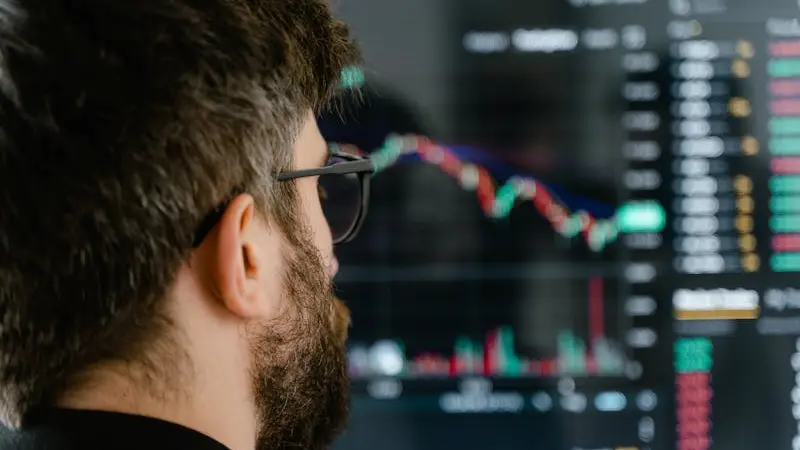Insider trading is as old as commerce itself. Before formal stock markets existed, merchants with privileged information held the upper hand. In 17th-century Amsterdam, traders profited from advance knowledge of ship arrivals, commodity shortages, and political developments. Those in the loop made fortunes. Those outside it were left guessing.
The London Stock Exchange’s early days were even more lawless. There were no disclosure requirements, no fiduciary duties, and no consequences for exploiting confidential information. If a banker knew a company was about to fail, he dumped his shares quietly. The public only found out when it was too late.
America’s financial markets inherited this Wild West mentality. The 19th century saw railroad tycoons and industrialists manipulating stock prices at will. They traded on undisclosed financial reports, secret land deals, and backroom negotiations. The term “insider trading” didn’t exist yet—because nobody saw it as a crime. It was just how the powerful operated.
When Did Insider Trading Become Illegal?
The 1929 market crash exposed the system’s corruption. Bankers and executives had quietly dumped shares before the collapse while retail investors were left holding worthless paper.
Public outrage led to the Securities Exchange Act of 1934 – the first law explicitly prohibiting insider trading. But enforcement was weak initially. Courts struggled to define what constituted illegal trading versus legitimate research.
The real turning point came in 1961 with the SEC’s case against Cady, Roberts & Co. This established the “disclose or abstain” rule – insiders must either reveal material information or refrain from trading. For the first time, corporate officers and major shareholders faced real legal exposure for exploiting confidential information.
History of Insider Trading Laws
The 1934 Act created the framework, but loopholes remained. The 1960s saw key court decisions expand liability.
In 1984, Congress passed the Insider Trading Sanctions Act, allowing treble damages. The 1988 Insider Trading and Securities Fraud Enforcement Act further strengthened penalties.
Major legal milestones include:
- Dirks v. SEC (1983): Established the “personal benefit” test for tippers
- United States v. O’Hagan (1997): Extended liability to outsiders who misappropriated information
- Salman v. United States (2016): Clarified that gifts of inside information qualify as illegal benefits
The SEC’s enforcement powers grew dramatically. From 2009-2019, it brought over 700 insider trading cases, collecting billions in penalties.
The 1980s: The Golden Age of Greed
The 1980s saw insider trading explode. Hostile takeovers, leveraged buyouts, and junk bond deals created endless opportunities for illicit profits. Information was currency, and Wall Street traders paid handsomely for it.
Ivan Boesky became the poster child of the era. He built a network of informants—lawyers, bankers, executives—who fed him confidential merger details. His trades were perfectly timed. His profits were obscene. He famously told a crowd of business students, “Greed is healthy.” The crowd applauded.
Then came the reckoning. U.S. Attorney Rudy Giuliani made prosecuting Wall Street his mission. He flipped informants, wiretapped traders, and secured convictions against Boesky, Michael Milken, and others. The message was clear: The free pass was over.
The Legal Gray Zones: How Insider Trading Really Works
Most people imagine insider trading as a CEO whispering stock tips to a friend. That happens. But the real mechanics are more subtle—and harder to prosecute.
A junior analyst overhears a merger discussion at a bar. He tells his roommate. The roommate buys call options. There’s no direct link to the company’s executives—just a chain of casual conversations.
Hedge funds hire “consultants” who just happen to have industry connections. The funds claim they’re paying for research, not secrets. Proving otherwise is nearly impossible without a smoking gun.
The legal standard hinges on intent. Did the tipper receive a personal benefit? Was the information truly non-public? Courts have struggled to define these boundaries for decades.
The Laws Tighten And the Loopholes Shrink
The SEC lost key cases in the 1990s because courts demanded proof of a clear “personal benefit” to the tipper. The bar was too high. Prosecutors needed stronger tools.
The Martha Stewart case in 2004 showed that even indirect trading could be punished. She wasn’t the original tipper—she got the info secondhand—but she still went to prison for obstruction.
The Supreme Court’s Salman v. U.S. (2016) ruling made prosecutions easier by clarifying that gifts of inside information to family or friends counted as illegal benefits. The Blaszczak case (2019) expanded liability to government insiders leaking confidential data.
Today, the SEC uses advanced data surveillance to flag suspicious trades. Whistleblowers can collect up to 30% of penalties. Enforcement is stronger than ever—but so are the workarounds.
The Modern Playbook: How They Still Get Away With It
Insider trading hasn’t disappeared. It’s just adapted.
Family members trade on casual tips. There’s no email trail—just a conversation at a wedding or golf course.
Offshore accounts hide transactions. Dark pools let big players trade in secrecy. Cryptocurrencies add another layer of anonymity.
Some hedge funds blur the line between expert networks and illegal tipping. They pay “consultants” for “market color” that just happens to mirror insider knowledge.
The SEC fights back with data analytics, but the cat-and-mouse game continues. For every case they win, countless others go undetected.
The Bottom Line
Insider trading began as an unspoken perk of power. The 1934 Act made it illegal, but enforcement lagged for decades. The 1980s crackdown sent a message, but the game never really stopped—it just evolved.
Today’s laws are tighter, surveillance is sharper, and penalties are steeper. Yet the incentives remain. As long as money can be made on secrets, someone will try.
The history of insider trading is a cycle: The rich find an edge, the law scrambles to catch up, and the little guy stays a step behind. Some things never change.

